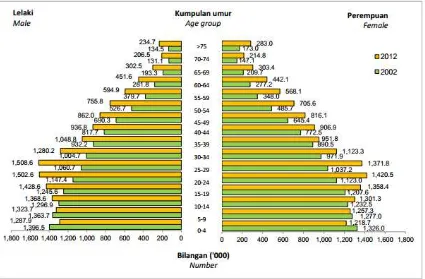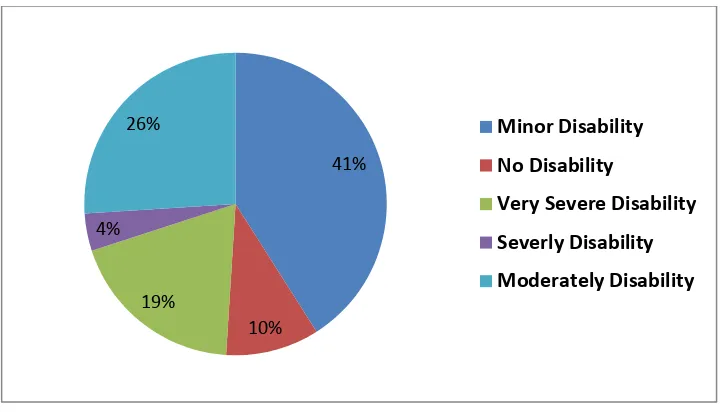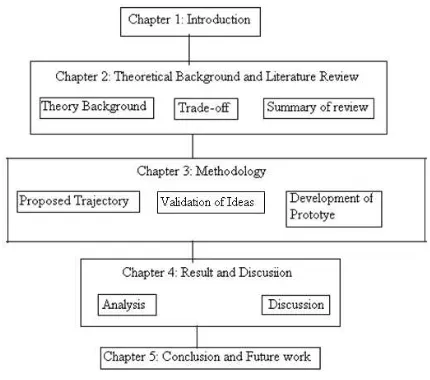FACULTY OF ELECTRICAL ENGINEERING UNIVERSITI TEKNIKAL MALAYSIA MELAKA
FINAL YEAR PROJECT REPORT
BEKU 4894
Design and Development of Stairs Climbing Trajectory for Lower Limb Assistive Device
Tan Chee Meng
Bachelor of Mechatronics Engineering
i
“I hereby declare read through this report entitle “Design and Development of Stairs Climbing Trajectory for Lower Limb Assistive Device” and found that it has comply the partial fulfillment for awarding the degree of Bachelor of Mechatronic Engineering”
Signature : ………
Supervisor’s Name : ………
ii
DESIGN AND DEVELOPMENT OF STAIRS CLIMBING TRAJECTORY FOR LOWER LIMB ASSISTIVE DEVICE
TAN CHEE MENG
A report submitted in partial fulfillment of the requirements for the degree of Bachelor of Mechatronic Engineering
Faculty of Electrical Engineering
UNIVERSITI TEKNIKAL MALAYSIA MELAKA
iii
“I hereby declare read through this report entitle “Design and Development of Stairs Climbing Trajectory for Lower Limb Assistive Device” and found that it has comply the partial fulfillment for awarding the degree of Bachelor of Mechatronic Engineering”
Signature : ………
Name : ………
iv
ACKNOWLEDGEMENT
In preparing this report, I would like to express my sincere appreciation to my supervisor, Dr Muhammad Fahmi Bin Miskon that gave me the opportunity and accepted me to be his supervisee. As my supervisor, he gave me encouragement, guidance critics and friendship. Without his support and interest, this project would not have been same as presented here.
I am also indebted to Universiti Teknikal Malaysia Melaka for funding and providing resources and relevant literatures for my project. Besides, I would like to thank for Mr Syed nMuhammad Shazali bin Syed Abdul Hamid as my panel 1 and Ms Nur Maisarah Binti Mohd Sobran as my panel 2 for giving me comment on the report and ways to improve it.
v
ABSTRACT
vi
ABSTRAK
vii
TABLE OF CONTENTS
CHAPTER TITLE PAGE
ACKNOWLEDGEMENT vii
ABSTRACT v
TABLE OF CONTENTS vii
LIST OF TABLES ix
LIST OF FIGURES ix
1 INTRODUCTION 1
1.1 Motivation 1
1.2 Problem Statement 4
1.3 Project Objective 5
1.4 Scope of the Project 5
1.5 Outline of the Dissertation 5
2 LITERATURE REVIEW 7
2.1 Anatomy of Stair Ascending Motion 7
2.2 Theoretical Background of Exoskeleton 12
2.2.1 System Block Diagram 12
2.2.2 Trajectory Generation 12
2.2.3 Manipulator Dynamic 14
2.2.4 Performance Indices 18
2.3 State of The Art in Work Related to Stair Ascending Assist
19
2.3.1 Comparison Among Available Solutions Trade Offs for Stairs Climbing Trajectories in Table 2.1
20
viii
Stairs Climbing Trajectories
2.3.3 Gap of Knowledge 23
3 RESEARCH METHODOLOGY 25
3.1 Stairs Climbing Trajectory 25
3.2 Validation of Ideas 31
3.2.1 Objectives 31
3.2.2 Experimental Setup and Procedures 31 3.2.2.1 Validation of Proposed Trajectory 31 3.2.2.2 Accuracy Test for Prototype 33 3..2.2.3 Accuracy Test for Proposed Stairs Climbing
Trajectory
36
3.3 Development of Prototype for Validation of Ideas 40
3.3.1 Designed of Prototype 40
3.3.2 Dynamic Planning 45
3.3.3Selection of Materials and Components 46
4 RESULT AND DISCUSSION 49
4.1 Validation of Proposed Stairs Climbing Trajectory 49 4.1.1 Proposed Trajectory of Stairs Climbing 49
4.1.2 Model Simulated in Matlab 57
4.2 Accuracy and Repeatability Test for Prototype 59
4.2.1 Drift Pattern of the Motors 61
4.2.2 Accuracy and Repeatability test of Motor 1 and Motor 3 (hip Joint)
63
4.2.3 Accuracy and Repeatability test of Motor 1 and Motor 3 (hip Joint)
67
4.3 Accuracy Test for Proposed Stairs Climbing Trajectory 71
5 CONCLUSION AND FUTURE WORK 80
REFERENCES 82
ix
LIST OF TABLES
TABLES TITLE PAGE
1.1 Number of disable person registered in Malaysia in 2011. Adapted in [1]
1
2.1 Comparison of stairs climbing trajectories and controller
19
3.1 Parameter of real model and simulated model 32
3.2 Mechanical design of prototype 42
4.1 Results of theoretical ( and obtained ( of the flexion angles of hip for stairs climbing trajectory.
51
4.2 Results of theoretical ( and obtained ( of the flexion angles of knee for stairs climbing trajectory.
55
4.3 The simulation model anatomy in Matlab 69
4.4 Summarize of data of all motors for drift pattern test
61
4.5 Summarize of data for Motor 1 (Left hip joint) using statistical method
63
4.6 Summarize of data for Motor 3 (Right hip joint) using statistical method
63
4.7 Summarize of data for Motor 2 (Left knee joint) using statistical method
67
4.8 Summarize of data for Motor 4 (Right knee joint) using statistical method
67
4.9 Modified of the proposed trajectory for stairs climbing
x
4.10 Modified proposed trajectory value and encoder value for hip joint
72
4.11 Modified proposed trajectory value and encoder value for knee joint
73
4.12 Comparison of theoretical angles and proposed trajectory for both hip and knee joint measured from the prototype
xi
LIST OF FIGURES
FIGURES TITLE Page
1.1 Total population by age group and sex, Malaysia, 2002 and 2012. Adapted from [1]
1
1.2 Percentage of disability due to stroke 2
1.3 Outline Dissertation of Report 3
2.1 Walking cycle for stairs climbing motion 6
2.2 Weight Acceptance Phase. Adapted from [8] 8
2.3 Pull up phase. Adapted from [8] 88
2.4 Forward continuous phase. Adapted from [8] 9
2.5 Foot clearance phase. Adapted from [8] 9
2.6 Foot placement phase Adapted from [8] 9
2.7 A schematic illustrating the gait cycles of (A) step-over-step and (B) step-by-step stepping. Adapted from [8]
10
2.8 Joint angle during ascent and descent at minimum, normal and maximum inclinations and during level walking averaged over all subject. Adapted from [10]
11
2.9 Mean sagittal angles of hip and knee joint during stair ascent. Adapted from [8]
11
2.10 System Block Diagram for exoskeleton robot. 12 2.11 Free body diagram of the exoskeleton robot 13 2.12 Two link planar manipulator. Adapted from [12] 15
3.1 Joint angle during ascent and descent at minimum, normal and maximum inclinations and during level walking averaged over all subject.
26
3.2 Hip joint trajectory angles for stairs climbing. Adapted from [11]
27
xii
Adapted from [11]
3.4 Real model 33
3.5 Simulate model simulated in Matlab R2009a 33
3.6 Conceptual experiment planning for accuracy test for prototype
35
3.7 Experiment set up for accuracy test for prototype 35 3.8 Water level measuring the horizon of the holder 36 3.9 Conceptual experiment planning for accuracy test for
stairs climbing trajectory
38
3.10 Experiment set up for accuracy test for stairs climbing trajectory
38
3.11 System overview of system 40
3.12 Lower limb assistive device for stairs climbing trajectory
41
3.13 Side view of the experiment prototype 44
3.14 Front view of the experiment prototype 44
3.15 Free body diagram of hip and knee performing stairs climbing
45
3.16 Cytron Technologies DC geared motor SPG30. Adapted from [20]
47
3.17 Arduino Uno. Adapted from [21] 47
4.1 Comparison of theoretical θ (°) and calculated θ (°) for hip angles flexion
52
4.2 Comparison of theoretical θ (°) andcalculated θ (°) for knee angles flexion
56
4.3 Phases of stairs climbing trajectory in a normal human gait
58
4.4 Phases of stairs climbing trajectory in Matlab simulation
58
4.5 Motor name and location 60
4.6 Drift Pattern of the motors 62
4.7 Angles versus time graph for hip motors 64
xiii
4.9 The 9th Accuracy and Repeatability test (Motor located at left hip)
66
4.10 Angles versus time graph for knee motors 68
4.11 Angles of deviation for knee motors 69
4.12 The 3th Accuracy and Repeatability test (Motor located at right hip)
70
4.13 Comparison of human stairs climbing gait and the proposed trajectory for hip joint of the prototype
75
4.14 Comparison of human stairs climbing gait and the proposed trajectory for knee joint of the prototype
76
4.15 Variation of deviate angles for both hip joints and knee joints of the prototype
78
4.16 Phases of stairs climbing in a normal human gait 79 4.117 Phases of stairs climbing of prototype programmed
with human behavior (left leg) and proposed trajectory derived from trajectory generation (cubic polynomial)
xiv
LIST OF APPENDICES
APPENDIX TITLE PAGE
A Lab sheet for DC motor test 84
B Lab sheet of Validation of Proposed Trajectory 85
C Lab sheet of Accuracy Test of prototype 89
D Lab Sheet of Accuracy test for Stairs Climbing Trajectory
97
E Development of Prototype 103
F Coding in Matlab 104
CHAPTER 1
INTRODUCTION
1.1 Motivation
Physical disability was found to be a major cause of morbidity in Malaysia which are 123,346 cases registered under Malaysia [1]. As Table 1.1 shown, the number of disabled people in Malaysia as reported in year 2011. Physical disability has the second highest number of case reported followed by learning disability as reported in year 2011.
Table 1.1: Number of disable person registered in Malaysia in 2011. Adapted in [1] Visually
Impaired
Hearing Physical Learning disability
Speech Mental Others Total
31,924 43,788 123,346 134,659 725 8,927 15,834 359,203
Individuals with physical disabilities often face difficulties to perform daily activities such as walking, stairs climbing, rising from chair and lifting an object. An assistive mechanism or a tool such as wheelchair and crutch usually needed to assist their daily activities.
Besides people with physical disability, most old people (senior citizen) were also has difficulties to perform daily activities due to musculoskeletal deterioration. Figure 1.1 shows the number of total population by age group and sex in Malaysia in 2002 and 2012.
2
potential rise in the number of assistive demanded in the near future. Aging of skeletal muscles may cause minor or partially physical disabilities to a person. At the same time, the rapid increase of citizens falling in 50-54 and 55-59 years old age group gives an indication of continuously high demand on joint assistive device, which could be sustainable for at least 10-20 years.
Figure 1.1: Total population by age group and sex, Malaysia, 2002 and 2012. Adapted from [1]
3
Study shows the patient that recover from stroke, 19% were very severe disabled, 4% severely disabled, 26% moderately disabled, 41% minor disabled and 10% had no disability shown in Figure 1.2 [2]. However, after complete stroke rehabilitation, 91.9% of the survivors were fully independent in self-care activities [4]. During the stroke rehabilitation services, the patients undergo a typical therapy programs that can increase their ability to perform activities of daily living. However, time is required for the stroke patient to recover. Thus, an assistive device is needed to assist the patient to perform daily activities while the patient is during the rehabilitation process.
Figure 1.2: Percentage of disability due to stroke
` Based on the data above, an assistive device is needed as tools to assist human daily activities such as mobility assistance for patient that under therapy program to perform their daily activities [5]. Besides, assistive device is needed as well for senior citizens who facing skeletal muscle degenerate problem and lead to minor disability or partially disability. Hence, a lower limb exoskeleton robot is an assistive device and wearable mechanism that assist human in performing daily activities such as walking and stairs climbing. With the help of this exoskeleton robot, patient who suffers from partially physical disabled able to perform daily activities independently.
Development of the exoskeleton robot cannot be achieved without tackling some technical challenges. The challenges in exoskeletons are in three areas which are electromechanical implementation, signals controlling and building up the structure model.
41%
10% 19%
4%
26% Minor Disability
No Disability
Very Severe Disability
Severly Disability
4
In addition, the device must be easy to control, comfortable, silent and aesthetically acceptable.
1.2 Problem Statement
Climbing stairs will be the motion investigated in this project. In order to climb stair several important factors should be considered including the angle of trajectory for hip and knee to perform stairs climbing motion, the accuracy of the limb assistive device for stairs climbing in term of actuator rotation and the accuracy of the proposed trajectory derived using cubic polynomial compare to the normal human stairs climbing gait.
The trajectory angle for hip and knee of stairs climbing is study by referring to the study from DR S.J. Abbas at year 2013. Besides, the accuracy of the device is ensured by choosing the suitable actuator with high accuracy in term of rotation to ensure the angle of trajectory of limb assistive device is precise to prevent it move excessively. These may cause injury to the user or unstable while completing the stair climbing motion. Therefore, a good actuator with high accuracy in term of rotation in the design is needed to ensure the angle of trajectory is accurate to provide smooth motion for completing one stair climbing motion.
5
1.3 Project Objectives
i. The aim of Final Year Project is to develop limb assistive device that follows the staircase climbing trajectory of a normal human.
ii. The objective is to prove the idea of designing the stairs climbing trajectory by using cubic polynomial equation for the limb assistive device is valid in term of accuracy and repeatability while performing stairs climbing motion.
1.4 Scope of the Project
i. The design is limit for 2 degree of freedom.
ii. The design is mainly focus on hip and knee motion.
iii. The stairs climbing trajectory is limited to the design of stairs for public environment with height of 17cm and wide of 29cm.
1.5 Outline of the Dissertation
In Chapter 1, the motivation of the research will be stated. The problem statement are clarified, project objectives and scope of the project are listed. In Chapter 2, the anatomy of stairs climbing are discussed, theoretical background of the exoskeleton is covered, and the trades off solutions for assisting stairs climbing is compared and making a summary of the available trades off.
6
In Chapter 4, the result from each test is analyzed in term of statistical method and graphical method. The discussion is made to give reason of the deviation of the results. In Chapter 5, the conclusion and the future works of the research is made. The references and appendix followed after Chapter 5. Figure 1.3 shows the outline dissertation of the report.
CHAPTER 2
LITERATURE REVIEW
The research on exoskeleton robot is conducted. There are 4 fields to be study. The first field is anatomy of lower limb of a normal person for stair ascending motion trajectory. The next section is to study the theoretical background of exoskeleton robot including the system block diagram of the project, trajectory generation to derive the general equations for stairs climbing trajectory, manipulator dynamic to find the minimum required torque for the actuator and list out the performance indices. Moreover, the revision of other works from journal and making comparison on method and listed down the performances and limitations in order to select a suitable method and components for stairs climbing trajectory based on the solution trades offs. Lastly, a research question is proposed based on the literature review and the hypothesis is made.
2.1 Anatomy of Stair Ascending Motion
Human leg consist total of 7 DOF (degree of freedom) which are the hip with 3 rotational degree of freedom, knee with 1 rotational degree of freedom and ankle with 3 rotational degree of freedom. The weight distribution for lower limb of a human is varies from 31.1% to 37.36% [6].
8
stance phases include weight acceptance phase, pull-up phase, and forward continuous. On the other hand, the swing phase of stairs climbing trajectory include foot clearance, and foot placement phase. The phases of stairs climbing trajectory are illustrated in Figure 2.2, Figure 2.3, Figure 2.4, Figure 2.5 and Figure 2.6.
Figure 2.1: Walking cycle for stairs climbing motion, adapted from [6]
Figure 2.2: Weight acceptance phase, adapted from [8]
9
Figure 2.4: Forward continuos phase, adapted from [8]
Figure 2.5: Foot clearance phase, adapted from [8]
Figure 2.6: Foot placement phase, adapted from [8]
![Table 1.1: Number of disable person registered in Malaysia in 2011. Adapted in [1]](https://thumb-ap.123doks.com/thumbv2/123dok/528550.60981/16.595.78.536.409.500/table-number-disable-person-registered-malaysia-adapted.webp)



![Figure 2.1: Walking cycle for stairs climbing motion, adapted from [6]](https://thumb-ap.123doks.com/thumbv2/123dok/528550.60981/23.595.93.530.202.368/figure-walking-cycle-stairs-climbing-motion-adapted.webp)
![Figure 2.4: Forward continuos phase, adapted from [8]](https://thumb-ap.123doks.com/thumbv2/123dok/528550.60981/24.595.165.445.265.619/figure-forward-continuos-phase-adapted.webp)